Our Process
- Home |
- Our Process
 Our Process
Our Process
The Herbal Silks process is a unique and innovative method that has been developed through extensive research on ancient textiles. After years of dedicated study, our team of scholars has uncovered the ancient dyeing techniques and formulated them in various proportions. These techniques have been standardized into twelve exquisite shades and four distinct finishings: general wellness, anti-microbial, aromatic, and sleep-enhancing.
In today’s modern textile industry, there is a growing trend towards synthetic processes that can pose potential health hazards. Herbal Silks, on the other hand, utilizes natural methods to safeguard the well-being of individuals. One such concept employed in Herbal Silks is micro-encapsulation, where the active components of herbs are encapsulated and integrated into the textiles during the finishing process. This technique, which was naturally practiced by our ancestors, allows for a lasting bond between the herbs and the textiles, ensuring their beneficial properties are retained.
Through the art of Herbal Silks, we are able to offer textiles that not only provide comfort and style but also promote overall health and well-being. Join us in embracing this ancient tradition and experience the transformative power of Ayurvedic textiles.
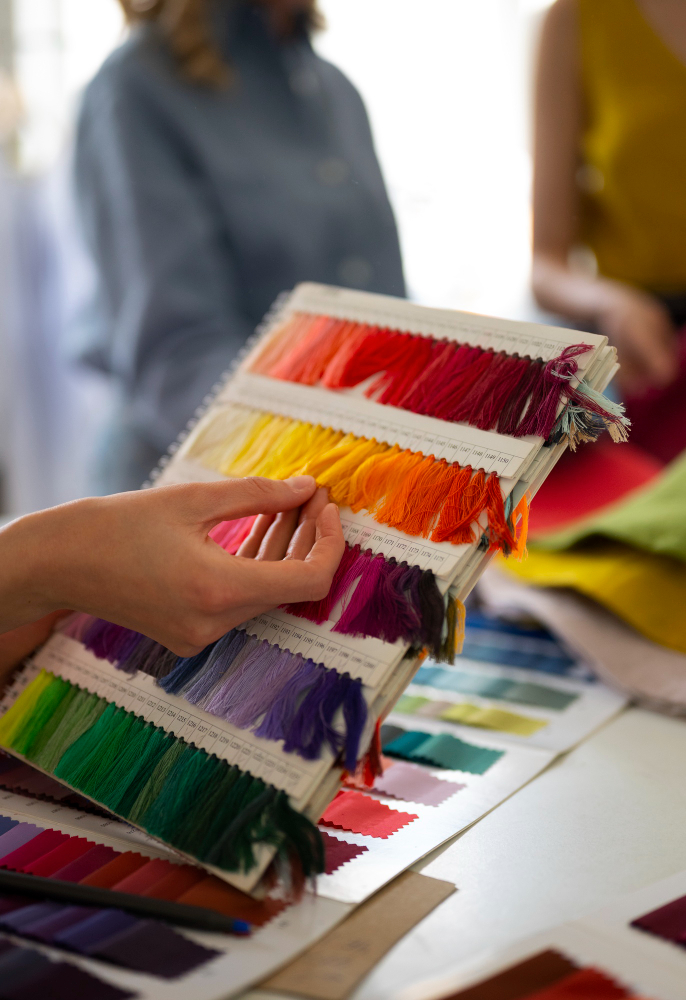
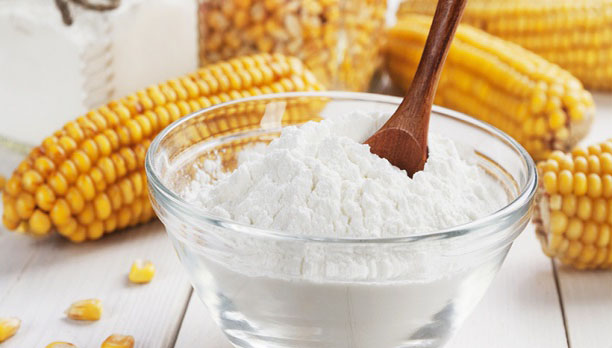
Pre-processing (RFD)
Pre-processing is a crucial method utilized to eliminate contamination from fibers or fabrics. In cotton, there are components such as pectin (yellowish color), wax, and starch used in spinning and weaving processes. To effectively remove these unwanted elements, a pre-processing procedure is carried out.
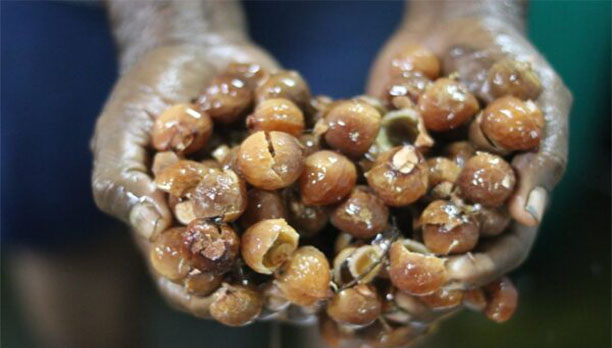
Desizing
Desizing is a process that involves the use of natural surfactants to release surface tension from fibers or fabrics. Various natural surfactants can be employed for this purpose. Fabrics are immersed in a surfactant solution for 24 hours, allowing them to become saturated and enabling impurities to be easily removed. This desizing process is conducted without the use of any hazardous chemicals, ensuring a safe and environmentally friendly approach.
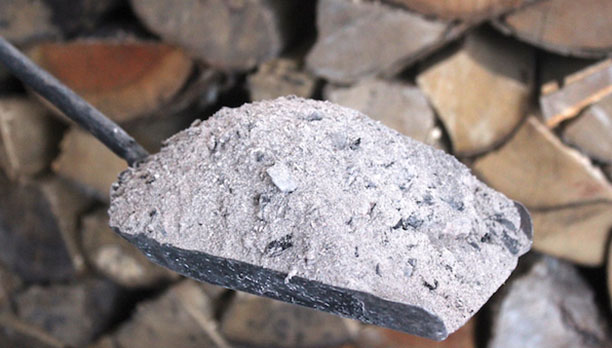
Scouring
Scouring is a process where the impurities are removed. For this purpose, we need an alkaline. Nature has given a lot of alkaline (ph more than 9). In earlier days, people use wood ash. We collect waste timber woods. Mostly residues after the banana cultivation were also used. The fabric or yarn is boiled in the presence of alkaline, so the impurities are washed out and pectin is also cleared to prepare the fabrics ready for dyeing (RFD).
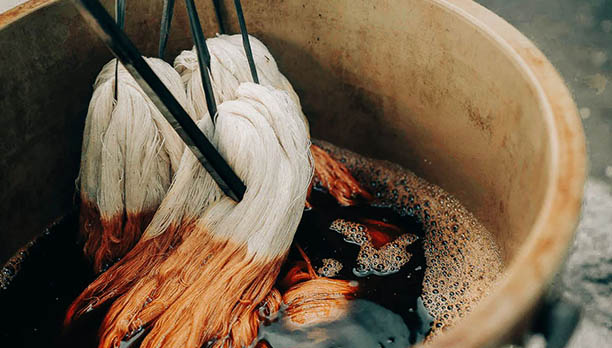
Dyeing
Ayurvedic dyeing is the complex dyeing process where many entities are involved. Shade herbs (which gives shades) and Mordanting Herbs (myrobalam, jathi leaves) and Ayurvedic Herbs (for Infusing Ayurvedic properties).
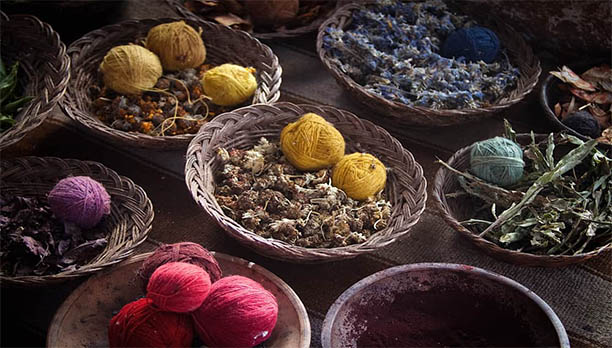
Selecting Shade Herbs
Scouring is a process where the impurities are removed. For this purpose, we need an alkaline. Nature has given a lot of alkaline (ph more than 9). In earlier days, people use wood ash. We collect waste timber woods. Mostly residues after the banana cultivation were also used. The fabric or yarn is boiled in the presence of alkaline, so the impurities are washed out and pectin is also cleared to prepare the fabrics ready for dyeing (RFD).
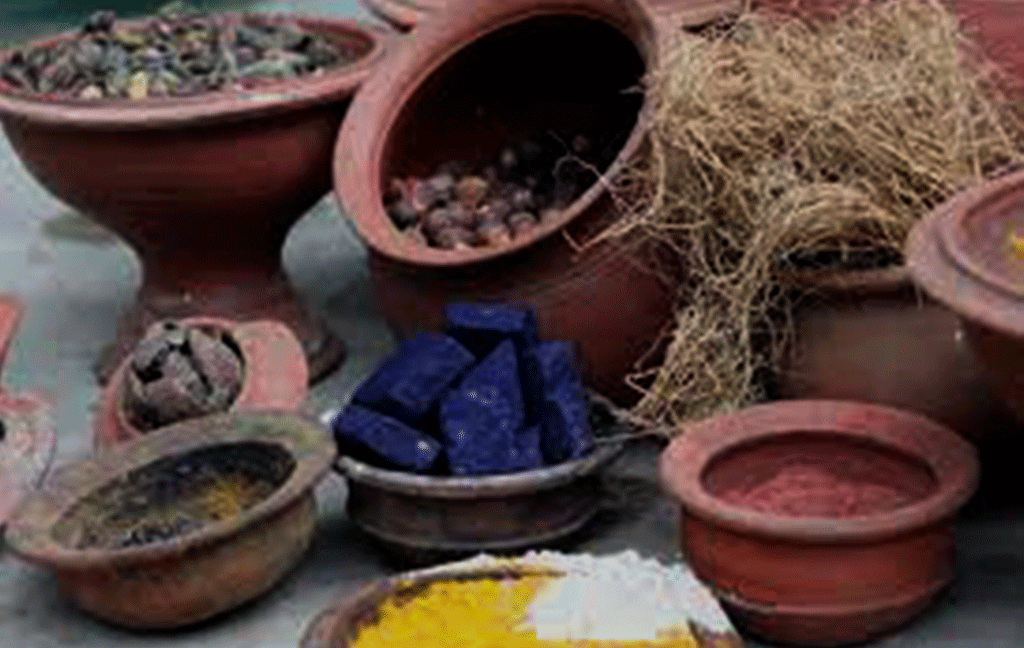
Selection of Natural Mordants
Mordants play a crucial role in fixing the shades onto fabrics. They can be used as pre-mordants before dyeing or post-mordants after dyeing. In Herbal Silks, mordants are added during the dyeing process or when making kashayam. Natural mordants can be sourced from plants and minerals, such as natural alum. We have specific formulas and percentages for adding mordants to ensure proper absorption by the fabrics.
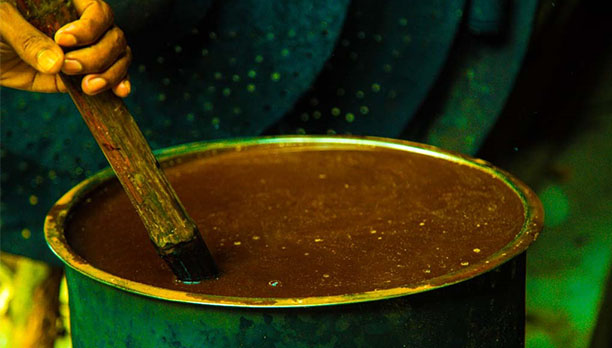
Preparation of Kashayam
Kashayam is a unique blend of live extracts from a variety of herbs specifically formulated for dyeing purposes. This aqueous extract is created by boiling water with extracts of dyes, active components, and mordant properties. A precise combination of over 15 herbs, selected for their color shades, mordanting capabilities, and Ayurvedic properties, are carefully measured and boiled in a controlled environment to produce the live extracts known as Kashayam.
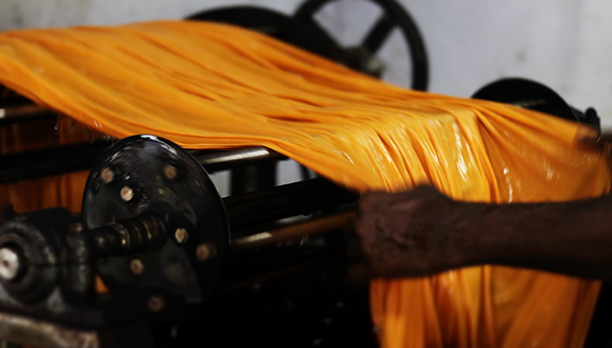
Dyeing
Dyeing is the process of fixing color shades onto fabrics. Yarn or fabric in its raw form (RFD) is immersed directly into the Kashayam and boiled for a specific duration at a controlled temperature. Only medicinal herbs and plants such as turmeric, myrobalan, tulasi, and pomegranate are used for dyeing, ensuring the retention of their beneficial properties. By immersing the plant material directly into the dye bath, we aim to preserve the medicinal qualities of the herbs.
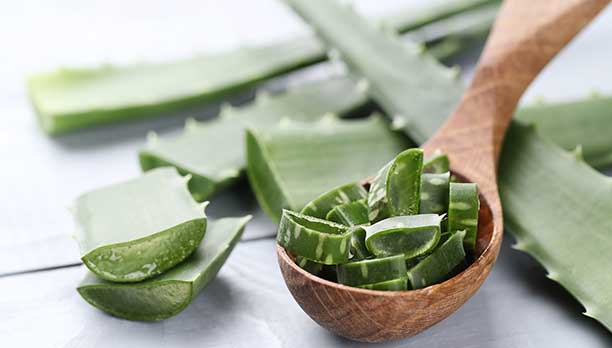
Fixing and Softening
In Ayurvedic herbal dyeing, finishing touches are applied by sprinkling pure water onto the cloth and treating it once more with a natural surfactant solution to remove any unfixed dye in the yarn or fabric. Dyed fabrics often tend to be stiff, so natural herbal ingredients like coconut oil and castor oil are utilized to soften the fabric or yarn, enhancing its texture and feel.